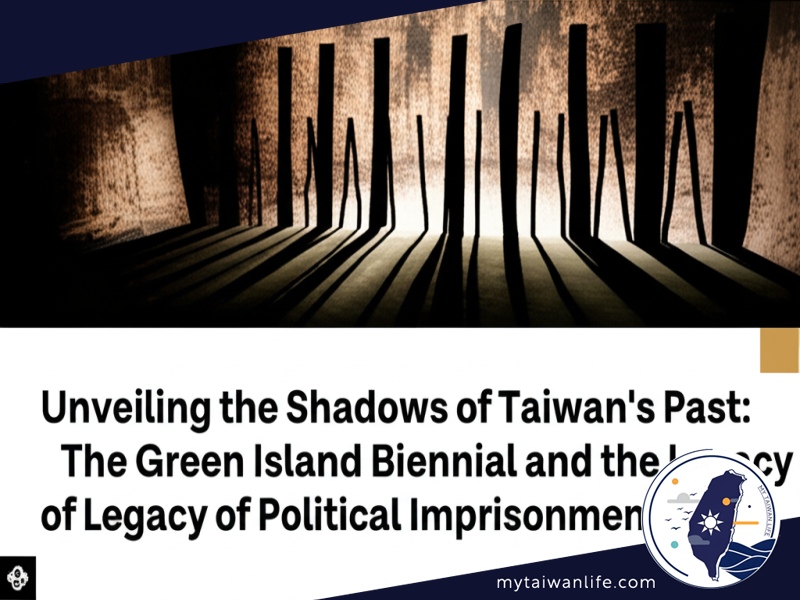Unveiling the Shadows of Taiwan's Past: The Green Island Biennial and the Legacy of Political Imprisonment
Exploring Isolation, Memory, and the Fight for Human Rights through Art

New Taipei, May 13 – The 2025 Green Island Biennial is set to illuminate the profound experiences of political prisoners in Taiwan, focusing on the temporal and spatial isolation they endured during their confinement. As curator Nobuo Takamori (高森信男) explained at the opening ceremony, the exhibition offers a poignant reflection on this challenging period.
Speaking at the event in New Taipei, Takamori highlighted how Green Island, despite its proximity to Taiwan geographically, came to symbolize a barrier during the White Terror period. It represented a place of ostracization for individuals politically prosecuted and cast out from society and the passage of time.
This context shapes the exhibition's core theme: "Duration of 149 Sea Miles: The Struggle of Memory Against Forgetting." This distance references the journey the first group of political prisoners took from Keelung to Green Island, setting the stage for the exhibition’s compelling narrative.
The Kuomintang (KMT) government, then holding authoritarian power, began sending political prisoners to Green Island for imprisonment in 1951. Many of these individuals were subjected to forced labor, a stark reminder of the era's harsh realities.
Meanwhile, Culture Minister Li Yuan (李遠) pointed out that the people residing in Taiwan were also isolated from the broader world under the same regime. Their ability to travel freely was severely restricted, and the flow of information was tightly controlled and censored.
Minister of Culture Lee Yung also pledged that the government would continue to actively support efforts to preserve the memories of the White Terror era and promote comprehensive human rights education throughout Taiwan.
According to Takamori, the Green Island White Terror Memorial Park, formerly a prison, will showcase dozens of video recordings, installations, and drawings, among other artworks from Wednesday to Sept. 21. The exhibition offers a powerful visual experience.
The biennial features the work of 31 artists from Taiwan and around the world. It invites viewers to consider the history of the White Terror era through artistic expressions, drawing parallels between Taiwan's past and the experiences of other countries.
Among the featured works is "For Every Freedom, Hope Remains," a series of large-scale woodcut prints created by the Malaysian art collective Pangrok Sulap.
Adi, a member of Pangrok Sulap, noted that woodcut art has long been associated with “resistance” against those in power. Their work aims to "honor the strength of those who endured oppression" and to "remind us the struggle for freedom is never over."
Taiwanese artist Wang Te-yu (王德瑜) will also present "N22.40," an installation designed to honor Tsai Kun-lin (蔡焜霖), a late victim of the White Terror and a dedicated human rights advocate. The installation hopes to inspire visitors to contemplate the significance of freedom and human rights.
The Green Island White Terror Memorial Park, once a prison complex that housed political prisoners, serious offenders, and criminal gang members, was transformed in 2018. Its purpose is to commemorate the victims of political repression during the White Terror period, which lasted from 1949 to 1992.
Other Versions
Desvelando las sombras del pasado de Taiwán: La Bienal de Green Island y el legado del encarcelamiento político
Dévoiler les ombres du passé de Taiwan : La Biennale de l'île verte et l'héritage de l'emprisonnement politique
Mengungkap Bayang-Bayang Masa Lalu Taiwan: Festival Dua Tahunan Pulau Hijau dan Warisan Pemenjaraan Politik
Svelare le ombre del passato di Taiwan: La Biennale dell'Isola Verde e l'eredità della prigionia politica
台湾の過去の影を暴く:緑島ビエンナーレと政治犯の遺産
대만의 과거 그림자를 밝히다: 그린 아일랜드 비엔날레와 정치적 투옥의 유산
Pagbubukas sa mga Anino ng Nakaraan ng Taiwan: Ang Green Island Biennial at ang Pamana ng Pagkakakulong sa Pulitika
Unveiling the Shadows of Taiwan's Past: Биеннале Зеленого острова и наследие политического заключения
เปิดม่านเงาอดีตไต้หวัน: งานไบเอนนาลีเกาะเขียวและมรดกแห่งการกักขังนักโทษการเมือง
Khám phá bóng tối quá khứ Đài Loan: Triển lãm hai năm một lần Đảo Xanh và di sản tù nhân chính trị

